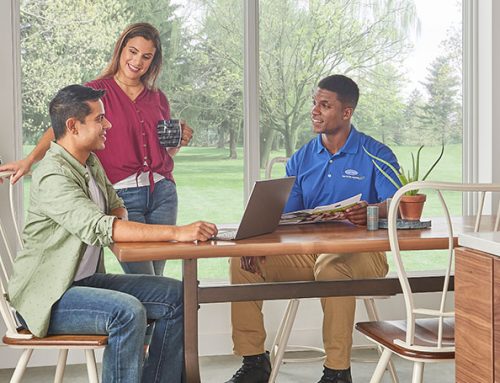
Can you imagine life without a/c? Sweltering heat waves that can melt the rubber on your shoes, cook an egg on the dashboard of your cars and truck, and make it nearly impossible to have an excellent night's rest-- sounds miserable!
Let's face it, life without A/C wouldn't be the exact same. Did you know, that prior to the 20th century, ice was really harvested for refrigeration? It was cut into 1-ton blocks, provided throughout the country and used in 'ice-boxes' to keep food fresh. The good news is today, refrigeration has actually been significantly improved because its introduction in 1834.
By knowing how your home's A/C system works, you'll be able to make it run much better and longer, and if it needs to break throughout the dog days of summer season, more positive discovering a replacement.
What is Central Air?
Since the 1960s, central air systems have been the most common design of cooling in America.
Finest defined by the condenser unit outdoors and ducts carrying cool air throughout the house, a central air is often referred to as a "split-system" due to the fact that HVAC company - Air Conditioning Edmonton the indoor and outdoor elements are separated.
How It Works
Similar to how a sponge soaks up water, central air conditioners take in the heat from inside the house and eject it outside through a procedure called "the refrigeration cycle."
It's simple to comprehend how an air conditioning unit works as soon as you see how the parts run together.
Parts of an Air Conditioning System
Divide into two parts; a system will consist of an outdoor condenser system (listed below) and a coil housed on top of the heater or inside air handler. The outside condenser, which does many of the work, operates in tandem with the air handler/furnace that disperses the conditioned air into spaces of your house.
The Refrigeration Cycle
The cooling procedure begins when the thermostat discovers the https://air-conditioning-edmonton.ca interior temperature has actually risen above the setpoint. It signifies the control panel in the air handler and enters into action.
1) The internal blower attracts the hot, wet indoor air from the return ducts into the air handler/furnace cabinet to be conditioned.
2) Unclean air entering the cabinet first travels through an air filter that traps dirt and particles.
3) The tidy air then passes through the evaporator coil. Utilizing metal fins to increase its area, the evaporator coil extracts heat and wetness from the warm air as the air passes through it. The tidy, cool air is flowed throughout the home.
4) A set of copper tubes including refrigerant, called a Line Set, link the indoor coil with the outdoor condenser.
5) The condenser dissipates the heat caught inside the line coming from the evaporator coil by biking it through its coils where a fan on top pushes air to speed up the procedure. The refrigerant is then compressed and travels back to the indoor evaporator coil, where the cooling process continues.
HVAC Cheat Sheet
It's a good idea to acquaint yourself with the technical language utilized by A/C specialists to comprehend your system when it pertains to making repair work or purchasing a new unit.
A/C - Represents heating, ventilation, and cooling. This acronym is utilized to classify all equipment used to manage air temperature, humidity, and air quality.
Split-System - In reference to parts of the system running both inside and outdoors. In a split system, the condensing system is found outside.
BTU - British Thermal Units - a measurement of how much heat can be removed from the air in an hour.
Heap - A measurement that describes the cooling capacity your unit can supply under regular conditions. 1 Ton is equal to around 12,000 BTU's. Heaps are frequently utilized when sizing an unit for your home, which can be figured out based on the square footage needed to be cooled or heated up.
Unrivaled Knowledge
Easily, the furnace, cooling, and electrical systems all work automatically, without us needing to fumble around in the basement or worse, a hot attic. Until something goes incorrect.
Learning about your a/c system might appear frustrating in the beginning, but when you have the fundamentals down, you'll be able to comprehend not just how your system works, but also analyze lingo to make purchasing a replacement simple.